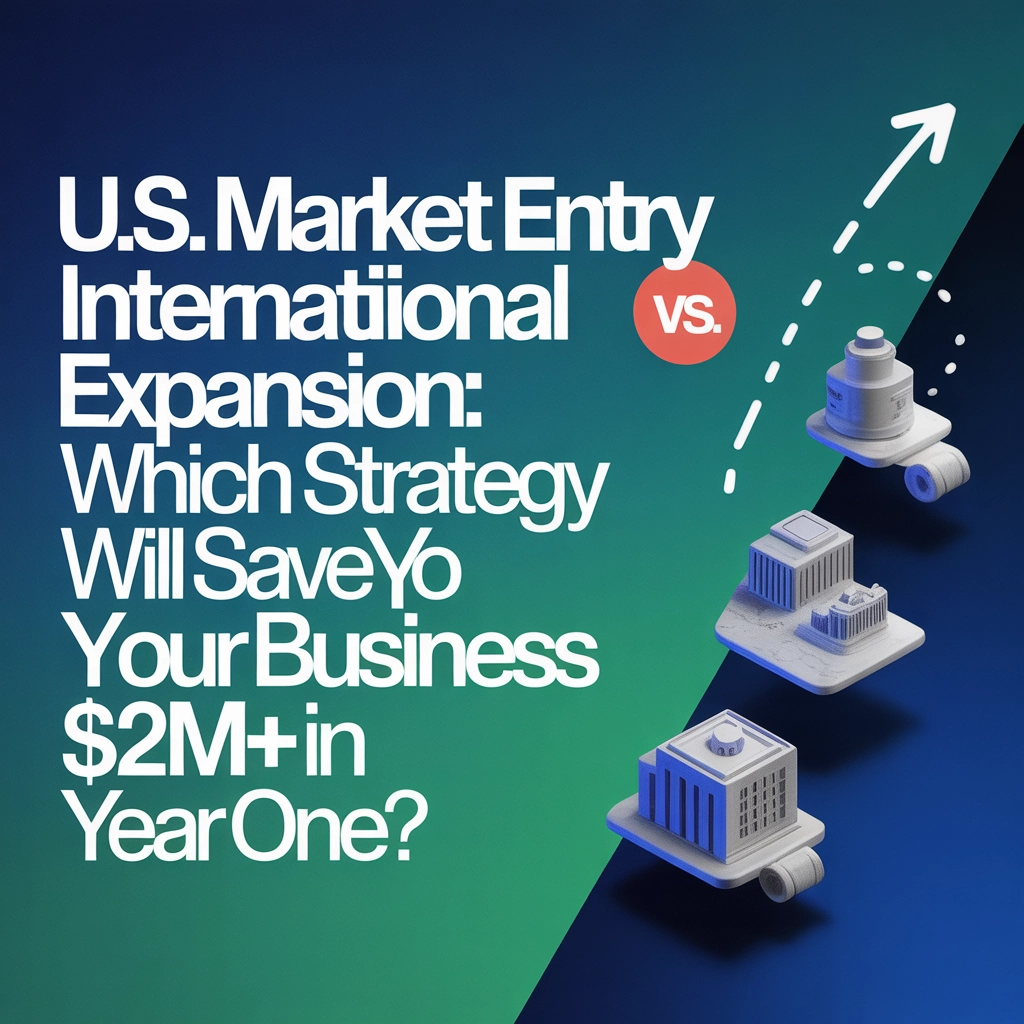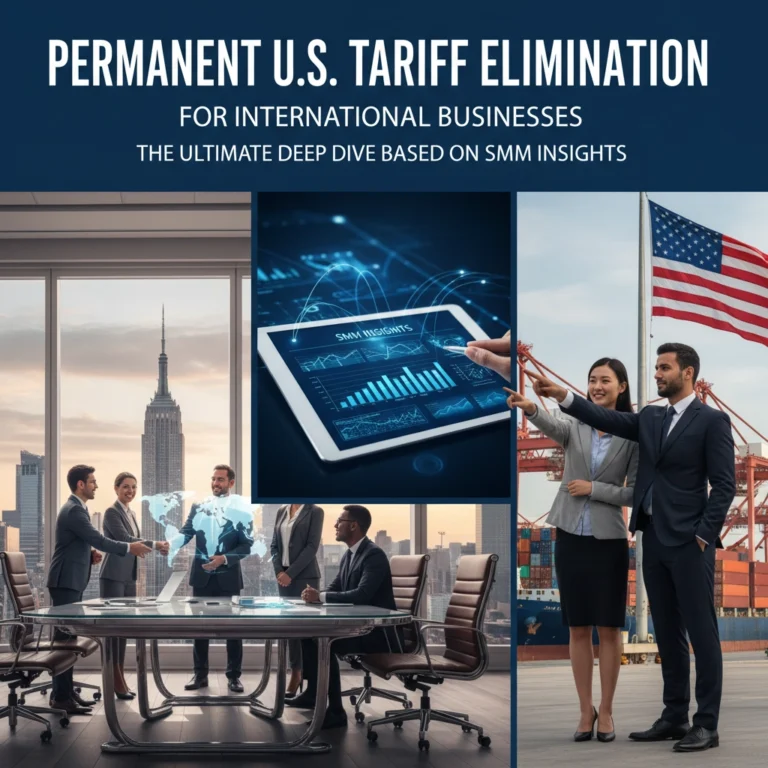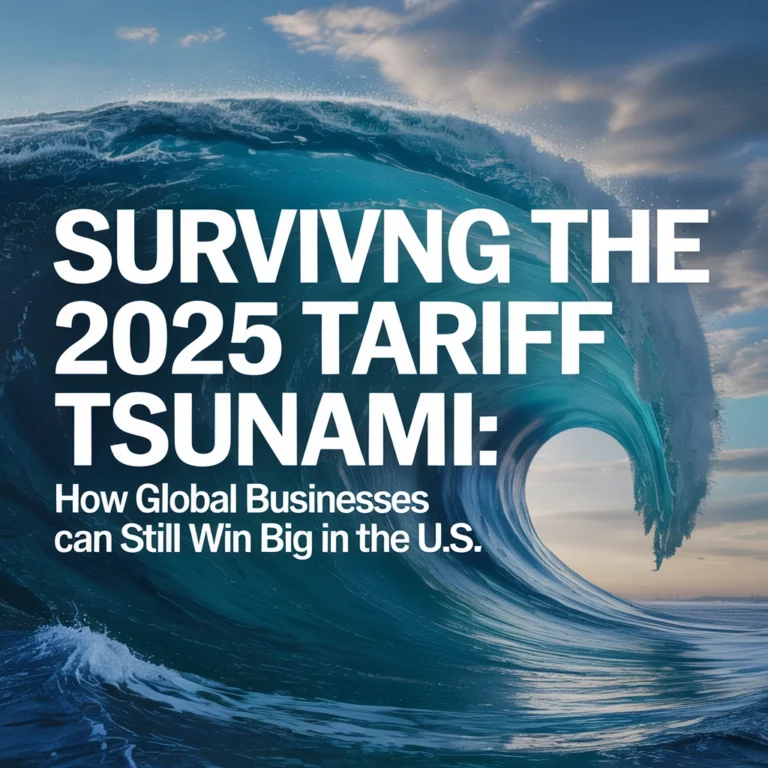U.S. Market Entry Vs. International Expansion: Which Strategy Will Save Your Business $2M+ in Year One?

Here's the million-dollar question (literally): Should you focus all your expansion energy on conquering the U.S. market, or spread your bets across multiple international markets? The answer could determine whether you're looking at a $2M+ revenue boost or a costly strategic misstep in your first year.
Both strategies have created massive success stories, but they're fundamentally different beasts. Let's break down the real numbers, hidden costs, and strategic implications so you can make the call that's right for your business.
The U.S. Market Entry Play: Going Big in the World's Largest Economy
When we talk about market opportunity, the United States isn't just big, it's absolutely massive. We're looking at a $13.5 trillion consumer market that represents nearly 70% of the country's $23.32 trillion GDP. That's roughly 24% of the entire global economy sitting in one unified market.

The Numbers That Matter
The U.S. market offers some compelling advantages that international expansion simply can't match:
Scale and Purchasing Power: With over 332 million consumers, you're not just entering a market, you're entering THE market. American consumers have serious buying power, and they're not shy about using it.
Unified Systems: Despite regional differences, you're dealing with one currency, one primary language, and one overarching legal framework. Compare that to managing 5+ different countries with their own currencies, languages, and regulations.
Innovation Hub: The U.S. hosts 37% of the world's unicorn companies. If you're in tech or innovation, this is where the action is happening.
The Reality Check
But here's where it gets interesting, and expensive. The U.S. ranks 52nd globally in ease of starting a business according to the World Bank. That's not exactly encouraging for quick market entry.
The hidden costs are real:
- Complex regulatory compliance across federal and state levels
- Cultural adaptation (yes, even within English-speaking markets)
- Higher operational costs in major metropolitan areas
- Intense competition in most sectors
International Expansion: The Diversification Strategy
On the flip side, international expansion offers something the U.S. strategy can't: risk distribution and multiple revenue streams. The global SaaS market alone is projected to hit $369.4 billion by 2024, and that's spread across dozens of viable markets.

The Multi-Market Advantage
Companies taking the international route are seeing some impressive results. We're talking about +793% increases in cross-border revenue and +185% higher international conversion rates for businesses that nail their expansion strategy.
Risk Mitigation: When one market hits a recession, others might be booming. Economic cycles don't sync globally, which means more stable overall revenue.
Market Arbitrage: Different markets have different maturity levels, cost structures, and competitive landscapes. Smart companies exploit these differences.
Scalability: Once you've cracked the code for international expansion, adding new markets becomes systematically easier.
The Complexity Tax
International expansion isn't just about translating your website. You're looking at:
- Multiple regulatory frameworks (GDPR in Europe, different data laws in Asia)
- Currency fluctuation management
- Localized pricing strategies
- Region-specific payment methods
- Cultural adaptation for each market
- Different time zones affecting customer support
The Head-to-Head Comparison
Let's put these strategies side by side and see how they stack up:
| Factor | U.S. Market Entry | International Expansion |
|---|---|---|
| Market Size | Single $13.5T consumer market | Multiple smaller markets (cumulative potential varies) |
| Regulatory Complexity | High but unified system | Variable across multiple jurisdictions |
| Cultural Barriers | Moderate (regional variations) | High (multiple distinct cultures) |
| Speed to Revenue | Faster (focused approach) | Slower (multi-market setup) |
| Risk Profile | High concentration risk | Distributed risk |
| Resource Requirements | Intensive but focused | Distributed but potentially higher total |
| Competitive Intensity | Very high in most sectors | Varies significantly by market |

Where the $2M+ Savings Actually Come From
Here's where we get to the meat of it. The $2M+ figure isn't just marketing fluff: it's based on real cost-benefit analysis of both strategies.
The U.S. Focus Advantage
Micro SaaS businesses are proving that focused execution in large markets can generate over $2 million in revenue with minimal overhead. These companies often achieve 25% yearly growth rates compared to standard SaaS companies, primarily because they're not spreading resources thin across multiple markets.
The savings come from:
- Operational efficiency: One set of regulations, one currency, one primary customer support language
- Marketing concentration: Your ad spend and content creation efforts aren't diluted across markets
- Faster iteration: Quicker feedback loops when you're focused on understanding one market deeply
The International Diversification Benefit
On the international side, companies like NEOM Wellbeing expanded across the UK, Europe, and the U.S., achieving a 34% increase in checkout conversion and 10% lift in order volume while tripling company size. The savings here come from:
- Risk mitigation: No single market can tank your entire business
- Market arbitrage: Operating in lower-cost markets while selling to higher-value ones
- Economic cycle protection: When one region slows down, others pick up the slack
Making the Strategic Choice
So which strategy actually saves you $2M+ in year one? The answer depends entirely on your specific situation.
Choose U.S. Market Entry When:
You've got a proven product-market fit that translates well to American consumers, and you can handle the regulatory complexity. If you can achieve that critical 40% user satisfaction threshold (where customers would be "very disappointed" without your product), the U.S. market's sheer size can drive massive revenue concentration.
This works especially well if:
- Your business model scales with market size
- You have experience with complex regulatory environments
- Your target demographic is well-represented in the U.S.
- You can invest heavily in understanding regional American market variations

Choose International Expansion When:
Your product has universal appeal and you can handle the operational complexity of multiple markets. This strategy works if you're building for long-term resilience and can invest in sophisticated localization strategies.
Go international if:
- Your business benefits from market diversification
- You have experience with cross-cultural operations
- Your product adapts well to different cultural contexts
- You can maintain quality while managing multiple regulatory frameworks
The Hybrid Approach: Best of Both Worlds
Here's a strategy many successful companies don't talk about enough: the phased approach. Start with focused U.S. market penetration to generate concentrated growth and cash flow, then use that success to fund systematic international expansion.
This approach can maximize both short-term revenue generation and long-term market resilience. You get the immediate scale benefits of the U.S. market while building toward diversified international presence.

The Bottom Line
The $2M+ savings potential exists in both strategies, but it comes from different sources. U.S. market entry offers concentrated growth potential with operational efficiency, while international expansion provides diversified revenue streams with risk mitigation benefits.
The key isn't just picking a strategy: it's executing with surgical precision. Whether you're conquering the massive U.S. market or building a diversified international presence, success comes down to deep market understanding, resource allocation efficiency, and the ability to adapt quickly based on data.
Your choice should align with your business model, risk tolerance, and resource capacity. But remember: in today's connected economy, the businesses that win big are those that eventually master both strategies. The question isn't whether you'll expand internationally or enter the U.S. market: it's which one you'll nail first.
Ready to make your move? The $2M+ opportunity is sitting there waiting. The only question left is: which path will you take to claim it?






